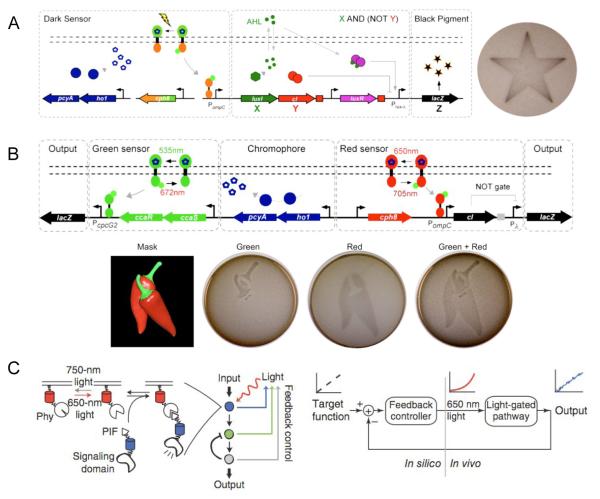Figure 4.
(A) Synthetic edge detector for spatiotemporal control over gene expression in E coli. Exposure to light inhibits the diffusion signal X and β-galactosidase expression Z. When cells are in the dark (NOT light), X and Y are turned on. Y functions as an inverter, thus X AND (NOT Y) generates the signal Z. (B) A multichromic light-inducible gene expression system. The green sensor turns on one β-galactosidase reporter to generate Z in response to green light. When exposed to red light, the green sensor is turned off, and the red sensor is turned on to depress Y and activate the second β-galactosidase reporter Z. (C) Light-regulated network that uses feedback to adjust input levels to create stable output patterns. The PIF/PhyB system responds to 650 nm light to produce an output from a signaling domain. This output is then fed back through a controller which will alter light input levels to maintain a desired cellular output. Adapted with permission from Elsevier, © 2009, from [42] and © 2010, from [43], and from Nature Publishing Group, © 2011, from [40].

